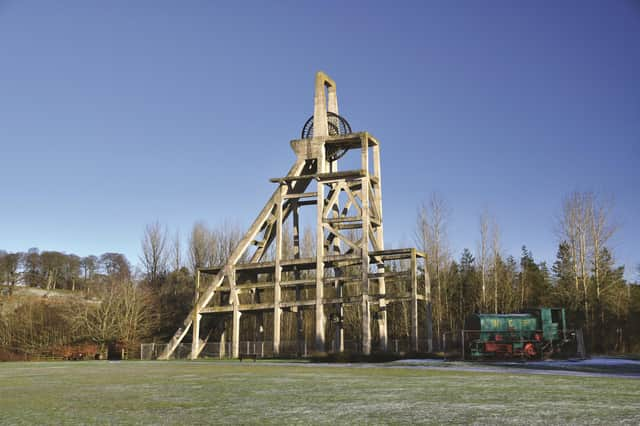Sustainable Scotland conference report: Digging deep for a just transition


Lorna Slater, minister for green skills, circular economy and biodiversity, said: “This transition will change the lives of workers, employers and communities across Scotland. Previous transitions have seen surges in unemployment, damaged trust and diminished opportunity.
“The sharp end of the age of coal was felt not in boardrooms, but in Scotland’s coalfields and their communities. As a government, we must not repeat these mistakes, rather instead work with partners from across Scotland to ensure that our transition to a low carbon and circular economy is a just and equitable one, with Scottish people at its core.”
Advertisement
Hide AdAdvertisement
Hide AdSlater told the conference that “upskilling and retraining opportunities at all points throughout a worker’s career” was central to this ambition.


The Climate Emergency Skills Action Plan had set out “the actions we need to take to ensure our workforce is able to support the transition to a low-carbon and circular economy”, while The Green Jobs Workforce Academy, “demonstrates our commitment to providing accessible information on training opportunities and skills transferability”.
Slater also highlighted the National Transition Training Fund – which supports new roles in construction, heat decarbonisation, energy, forestry and land management – and the role of “innovative and effective” apprenticeships in workforce development planning.
She concluded: “The challenges we face as a society are not to be taken lightly. But through collective effort, I’m confident we can not only overcome them, but take advantage of new opportunities. Equipping people with the skills they need to shape and transition through their careers is critical to our nation’s success. This cannot be achieved by the actions of government alone but will require a collaborative approach – a culture of shared investment in building our shared expertise.”
Conference chairman Dave Reay, executive director of the Edinburgh Climate Change Institute, told the event that meaningful Scotland-wide collaboration was vital to grasp the opportunity.
He said: “Scotland is showing the way. We are making mistakes, but as long as we are collaborating and communicating successes and failures, and sharing that internationally, we really will punch above our weight.
“Scotland has done this for centuries and the place that delivered the Enlightenment now has the chance to lead a new climate enlightenment.”
The conference discussed in detail the “just transition” required to shift the focus from oil and gas to renewable energy – but heard it was a complicated process.
Advertisement
Hide AdAdvertisement
Hide AdMarissa Lippiatt, head of climate emergency and high value manufacturing at Skills Development Scotland, laid out the scale of the challenge.
“The climate emergency is the biggest single challenge to the skills landscape and requires huge change across the economy, but it brings with it huge opportunity,” she said. “It’s a transformational opportunity but the pace and scale also brings with it risks and disruptions.”
Joanne Allday, strategic business development manager at Port of Cromarty Firth, said the key was to balance the development of new industries with the “managed decline” of oil and gas. She told the audience: “No-one is talking about switching off the taps. If we did, we would have to import oil and gas from other sources which are not decarbonising at the same rate as our own industry.
“We can see what is coming – this is the first time we have been able to see so far into the future and take a proactive approach.”
Allday said the oil and gas industry and renewables hubs could work in partnership: “Over the coming years it’s about complementing the oil and gas industry, not replacing it.”
The major opportunities, she said, were in floating wind energy in the North Sea and green hydrogen. These, plus carbon capture and storage, would be central to the jobs transition away from oil and gas. Both Allday and Sian Lloyd Rees, managing director of Aker Offshore Wind, said Scotland had to act fast on offshore wind.
Scotland currently has between one and two gigawatts of offshore wind power in place, but this is set to rise to 11GW by 2030, with estimates suggesting each extra 1GW of capacity added 5,000 jobs per year, and many more during construction.
Allday said floating wind power, which can be deployed in harsher conditions further out to sea, offered an opportunity to make more components in Scotland.
Advertisement
Hide AdAdvertisement
Hide AdLloyd Rees said: “We need a lot of skills and capabilities to take this offshore wind opportunity forward. There are 160,000 people still employed in the oil and gas industry and their skills are hugely relevant to wind.”
Areas of relevance included engineering and construction, project management, the subsea environment, operation and maintenance and digital expertise.
“Transitioning those skills needs a lot of engagement,” Lloyd Rees added. “We need to ask where are the strengths and capabilities and where are the gaps.”
This would involve drawing on skills from a wide range of other occupations, not just oil and gas, she said, and diversifying the workforce – and not just looking at technical skills, but also leadership, project management and communication.
She argued that retaining staff, not recruiting them, was the biggest challenge. “We need to look at the career path, and ask what they want. That might be very different to what previous generations have wanted – it’s more about developing individuals and giving them skills they can transport across different industries through their careers.”
Lloyd Rees said new skills would also be needed for the new energy world, in areas like hydrogen gas handling and transportation, making and using electrolysers to create green hydrogen and complex project management in carbon capture and storage .
“If you can get ahead of the technology curve, it’s very hard for people to catch up,” she said. “But we also need to get the supply chain ready and have the skill sets we need ready.”
Joanne Allday agreed, saying: “Commercial deployment of floating wind and green hydrogen is likely to happen first in Scotland. We could have a first-mover advantage if we build a supply chain with skills and expertise to be exported in the future.”
Advertisement
Hide AdAdvertisement
Hide AdShe illustrated the scale of the challenge by describing how turbine blades had increased in size from 45 metres to 85m and could increase to 120m. This required huge amounts of space for construction, but also huge amounts of people. The developer of one very large offshore wind project, which had been discussed with Port of Cromarty Forth, said it would need up to 5,000 welders.
Allday said there was also a “big opportunity” with green hydrogen, which was moving faster than expected (see panel). But she warned: “The early leader advantage is there but won’t be there forever.”
She added: “The size of the prize is so big that we cannot achieve it on our own and requires enormous levels of collaboration.”
Full speed ahead in the drive to create green hydrogen
Green hydrogen is central to Scotland’s environmental ambitions.
It is produced through electrolysis, a process that separates water into hydrogen and oxygen, using electricity generated from renewables.
It can be used in a variety of ways, including to transfer or store energy and as an energy in itself. It can be added to natural gas to burn in district heating plants, or to directly power fuel cells in cars, buses and ships.
Blue hydrogen is created from natural gas, using “steam reforming” – adding it to heated water in the form of steam. The output is hydrogen, but carbon dioxide is a by-product, and carbon capture and storage is needed to trap and store these CO2 emissions.
“Green hydrogen” was being seen as further into the future but has picked up pace, with a project set to start production in the Cromarty Firth in 2024.
Advertisement
Hide AdAdvertisement
Hide AdThe project is led by ScottishPower and Storegga, and the first green hydrogen will be used to power whisky distilleries. Glenmorangie, Whyte & Mackay and Diageo were all partners in the feasibility study. The project will have the UK’s largest electrolyser to produce green hydrogen.
“Lots of money is being put into blue hydrogen, because it’s coming more quickly,” says Joanne Allday. “But we are seeing green hydrogen move more quickly and it will reach cost parity [with other fuels] faster than we thought.
“We need blue hydrogen but not at the expense of investing in green hydrogen. We have the opportunity to export green hydrogen in future, and most European countries want to import green hydrogen rather than blue.”